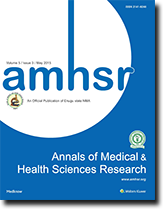

Background: Low birth-weight in infants is further categorized as Extreme low-birth weight (ELBW), Very low-birth weight (VLBW) and Low-birth weight (LBW) when weight at birth is <1 kg, ≥ 1 kg to <1.5 kg and ≥ 1.5 kg to <2.5 kg respectively. It is not clear how these various categories predict co-morbidities, duration of hospital stay and survival in affected newborns. Identifying such relationships will help prioritization of care, and this study is designed to explore these. Methods: This is a prospective study conducted over a 45 months period at the neonatal intensive care unit (NICU) of the Enugu State University Teaching Hospital (ESUTH), Enugu, Nigeria. Results: A total of 167 LBW newborns were enrolled, with about 90% born preterm. ELBWs constituted 20 (12.0%), while 47 (28.1%) and 100 (59.9%) were VLBW and LBW respectively. About 50 (32%) of the babies did not survive. Of these number, 16/20 (80%) were ELBW babies, 19/47 (41%) were VLBW while 15/91 (17%) were LBW babies, (P=0.001). Survival analysis showed that ELBW HR 20.27; P=0.001] and VLBW [HR 3.57; P=0.002] babies were respectively about 20 and 4 times more likely to die relative to the LBW group. Recurrent apnoea and the need for respiratory support were significantly more common among ELBWs and VLBWs relative to LBWs (P=0.001), while the LBW babies developed less hypothermia but more hypoglycemia (P=0.001). No significant differences were observed in the incidences of other co-morbidities. Conclusion: We conclude that low mean weights in infants are associated with higher fatal outcomes and prolonged hospital stays as well as a number of co-morbidities.
Select your language of interest to view the total content in your interested language
Annals of Medical and Health Sciences Research received 24805 citations as per google scholar report
 The Annals of Medical and Health Sciences Research is a monthly multidisciplinary medical journal.
The Annals of Medical and Health Sciences Research is a monthly multidisciplinary medical journal.